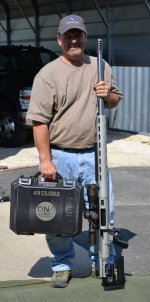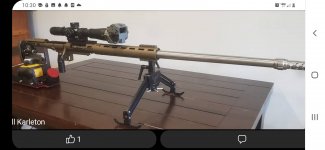...I hear you, but there is one variable that is always present and that we will never control is the environment.
...because this thread started out specifically to Cortina's offering, I looked at it from a different viewpoint, it included a muzzle break. The cost of his device when compared to similar priced brakes touting high efficiency results, I considered the dollar cost and it's worth to me. I know from my own experience that a brake improves efficiency in recoil efficiency. If the tuner aspect of Cortina's device was negligible or "snake oil", was the performance improvement of the brake portion sufficient to justify the cost? The ease of attachment and timing of the device compares better than majority of the breaks on the market, so that's a plus in itself. His vids on carbon cleaning the stainless version in CLR and no damage was informative, I see that as a "time saver" especially since the install/removal process is easy to do as designed.
So, despite the long-term usage of tuners in multiple disciplines and their corresponding reports (good or bad), that wouldn't be a guarantee that MY experience (or capabilities) would be the same, but if the brake worked and it was easier to clean, then I would still be gaining a benefit should I decide to purchase one.



